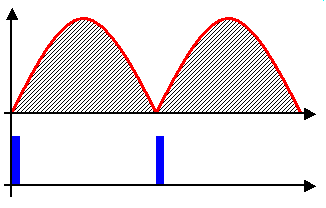My first sous-vide cook (and last like this)....
So, my kiddo got sick, which gave me some weekday time to stare at a computer screen for hours. I set up my HeatermeterPi prototype setup with my SSR detailed on page 2.
I ran the extra probe I have as a heatsink monitor, since I was especially worried that it would overheat and melt since I'm pushing 12A through a 10A relay and power cable. Note that I would not leave this un-attended, and I made sure to put it on a metal pan so any melting plastic would not mess up my faux granite counter top.
Settings: MIN and MAX fan speed both set to 100% to force "Long PWM" or "SRTP" mode. PID gains started as stock, and I tuned them a bit to reduce oscillation and overshoot. The gains I ended up with are P=10, I=0.007, D=20. I have not tested those gains from a cold setup to see how much they overshoot, but steady state I got it easily within +/- 0.5 degree F, and even for a while within 0.1 degree of the setpoint. Most blips in the temp were due to me opening the lid to flip the pork around since I have no setup to mix the water up and the bubble in the bag made it float a bit.
Next time I run it I'll start with I=0, D=0, and tune in P, then minimize overshoot/oscillation with D, and then decrease steady state error with I. I did it out of order thinking the stock gains would be close. The gains can be much better. Oh, and the heat sink got really hot. At around 185F, I found an old RCA splitter and hooked my blower fan up to blow on the blue box. A properly rated relay or a hole in the case, or heat sink compound are all things that would have kept me from needing active cooling, but I was working with what I have. The kill-a-watt claimed 1.5KWh for the whole cook, so maybe 25 cents in electricity? Cheaper than a bag of charcoal for sure.
Some photos:
^ Just showing off the HeatermeterPi's versatility

^
Overall, I think the
cook went very well. I do not own a vacuum sealer, so I though I would be clever and use pre seasoned tenderloin that we eat a lot at my house... I had a small amount of air in it that puffed up the bag, but cooking went well and I measured an exact 140F in my bbq thermometer in the center of the pork.
It was juicy, but the flavor, which I typically "enhance", was actually a bit too strong. I guess a lot of it falls off when I grill or oven roast these things... lots of extra salt flavor, probably from the fat not being allowed to escape. The fat (as seen in the picture) did not really fully render out... it was soft, but I still chose to pull it off for the most part. I'm not giving up on sous-vide yet, but I think I prefer the grilled flavor on these tenderloins. I did attempt to sear it, but I used too much oil, and I could not find my cast iron skillet, so I failed at that, but it still looked decent enough.






